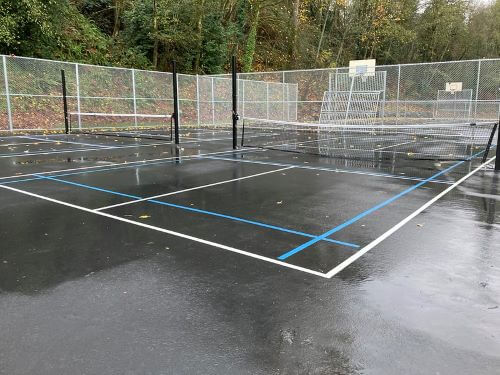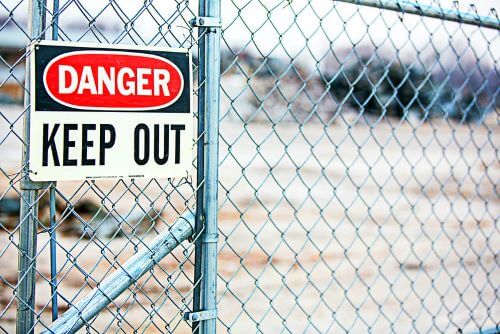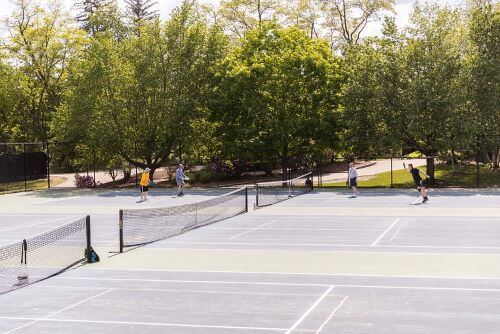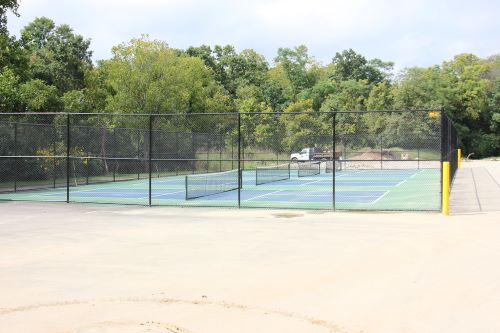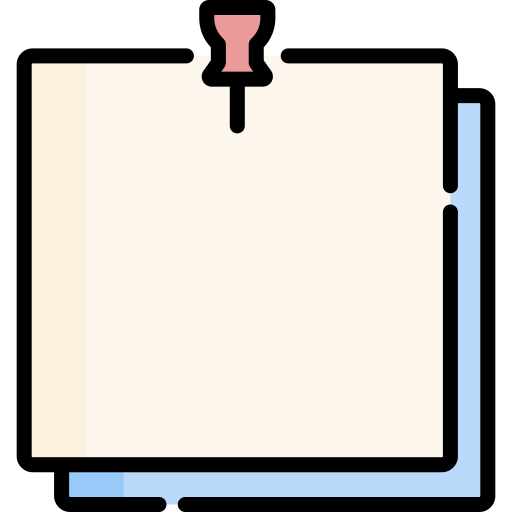Trying to figure out if you can play pickleball on concrete?
Not everyone has a pickleball court in their backyard. For some of us, just learning if we can play pickleball on a concrete driveway is our only option.
The short answer to this question is yes, but not very well. If you’re just trying to play recreationally with your family and friends, then playing pickleball on concrete is better than not playing at all. However, there are some downsides to this. If you’re asking this question because you’re building a pickleball court, then you should especially keep reading.
Can You Play Pickleball on Concrete?
If you’re talking about bare concrete, then yes, you can play pickleball on concrete. But, the bounce of the pickleball will be inconsistent. Your pickleball will also deteriorate and damage faster because of the abrasive texture of concrete. Equipment aside, playing on bare concrete also increases the risk of injury and will damage your joints, especially your knees.
For polished concrete, yes, the smoother surface will be better for your pickleball. However, polished concrete can be quite slippery, especially slightly wet. Even your sweat can make you slip on polished concrete. Additionally, although the surface is better for your pickleball, polished concrete will still have imperfections that will cause your pickleball to bounce inconsistently.
There are several other types of concrete, but they all pretty much have the same downsides.
Let’s briefly talk about the dangers and problems of playing pickleball on bare concrete
Dangers of Playing Pickleball on Concrete
Although the sport originated as a family activity, Pickleball is quickly becoming a competitive sport. There are dozens of tournaments across the country and tons of players are becoming better and better at the sport. Consequently, players are getting faster, learning more techniques, and experimenting.
As such, players on concrete courts are beginning to feel the dangers of playing pickleball on bare concrete.
Concrete Pickleball Courts are Prone to Injury and Slipping
Polished concrete is easier to stand on, but the polished surface reduces its ability to absorb moisture. So, polished concrete that isn’t properly dried, even if only wet from a few drops of sweat, can be extremely slippery.
Bad Shock Absorption Is Bad for The Knees
On the note about absorbing shock, hard and dense materials that lack cushioning are very good at returning back forces applied to them. These materials—concrete—” reflect” the force back because the material can’t absorb the force very well. The less effective the material is for absorbing shock, the stronger the reflection is to the force acting on that material.
In this case, you’re the force and the material is concrete. Every time you run, stomp the floor or jump, all that force returns to your knees and joints.
Imagine diving into foam versus cardboard. Both of these materials don’t really hurt, but if you dive 100 times, you’ll have broken bones from landing on cardboard. The same thing is happening to your knees and ankles. Playing pickleball like this for a couple of years will severely affect your joint health as you grow older.
Burns Through Pickleballs Faster
Abrasive surfaces, exactly like bare concrete, will chip through pickleball faster than acrylic-coated courts.
The rough, pointy edges of rough concrete grind through the ball each time it makes contact. This is especially bad for pickleball because these balls are made from a soft, lightweight material. The softer material is necessary so that the ball bounces and travels as it does.
A bare concrete playing surface will easily be half the lifespan of a good pickleball.
Irregular Concrete Surface Means Bouncing Everywhere
Have you ever tried driving off-road? It’s the same principle. A rough concrete surface will make the ball bounce irregularly. The ball won’t be consistent and neither will the game, leading to a bad game for everyone.
Even if you polish the concrete to make it smoother, you’ll still run into the problem of the concrete warping through temperature changes or inconsistencies in the concrete mix. Eventually, your concrete floor will be irregular again.
This also ties into one of the main downsides of using concrete, the maintenance. We’ll talk more about that later on.
Playing Pickleball on Concrete Is Loud and Noisy
One more thing. This isn’t really a “danger” of using concrete, but it absolutely sucks and isn’t talked about as much in other articles. Playing on bare concrete makes pickleball loud and noisy. It’s especially worse if you have surrounding walls that reverberate the sound back.
Pickleball Court Dimensions: The Basics
Before we proceed to the next topic, which is about the best material for a pickleball court, let’s first figure out how big a pickleball court is.
The standard dimensions of a pickleball court are 44 x 20 feet (or 13.4 x 6 meters). This is just the court linings though. You’ll need extra space at the baselines and the sides to completely play the sport. There’s also a center line that runs down in the middle of the court for doubles play.
The pickleball net height is 36 inches high at the ends but 34 inches tall at the center. The nets are also 22 feet wide.
What Kinds of Material Is Best for A Pickleball Court?
If concrete isn’t the best material for a pickleball court, then what can you use? Hold on.
Concrete is a bad material to play pickleball on, but you can use it as the base of your pickleball court. In fact, it’s one of the best base materials you can use. However, you must add a surface coating over your concrete to make the pickleball court fully usable and joint-friendly.
Surface coating is a necessity for all kinds of court sports, like basketball, tennis, volleyball, and so on. Not only does the coating improve shock absorption, but it also increases the lifespan of the court in general. It decreases the chances of concrete cracking and keeps the concrete underneath the coating in great condition.
Benefits of Using Surface Coating for Pickleball Courts
Let’s briefly talk about the benefits of using surface coating for pickleball courts.
Better Shock Absorption
Surface coating for indoor pickleball courts can improve cushioning and shock absorption by up to 25 to 35 percent. Dozens of companies deliberately advertise how much shock their surface coatings can absorb.
Improved Traction for Less Slipping
The coating also adds a “rubberized” feel to the floor, making it great for quick, lateral movements that are common in pickleball. Better traction means fewer chances of slipping, reducing the risks of injuries and falls overall.
This is most important for outdoor courts, which are more prone to getting wet from light rains.
Cheaper in The Long Run
Finally, surface coating is much cheaper in the long run. With a proper coat over your floor, you can make a concrete court last 30 years with coating maintenance. Without surface coating, you’ll be lucky if your concrete court will last 6 years.
The maintenance for surface coating is also cheaper than cement. You don’t have to worry about cracks and repairs. You can think of it as applying paint to your car. If your car doesn’t have paint, it’s going to rust and be even more expensive to repair
If you want to know more about surface coatings for pickleball courts, you can read our full article about it.


